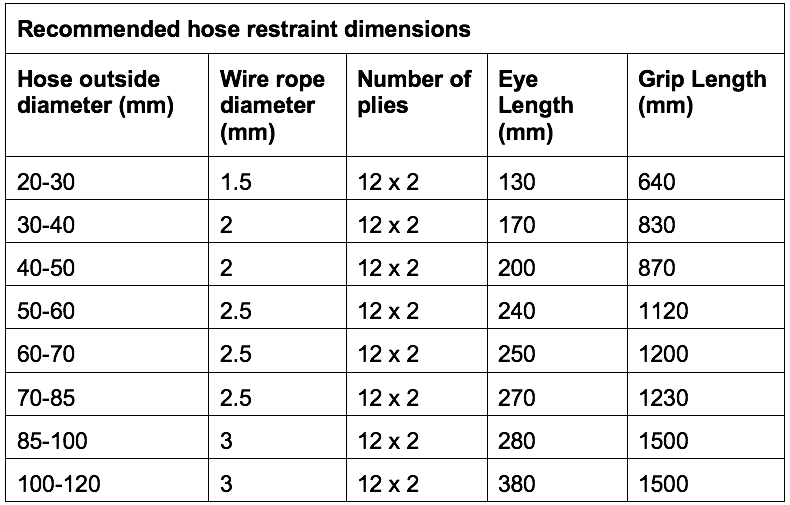Proposed Standards for the Application of hose Restraints to High Pressure Air Hoses on Drill Rigs
By Colin Rice of Colin Rice Exploration and Training (Pty) Ltd.
Banner photo supplied by Slings and Supplies
While hose sock type restraints have become a standard safety feature on drill rigs and compressors, the specification of the restraints and the fitting and anchoring methods vary significantly. In this brief article, I have suggested some checks that could form the basis of a standard for the section and installation of hose sock restraints.
This is the fourth article of Part 2 of our Technical Series on Compressor and Air Hose Safety. Click here for an outline of the entire Compressor and Hose Safety Series.
All air hoses must be in a good general condition and must be adequately supported at appropriate places on the drill rig unit so that a failed air hose cannot fall and cause injury or damage. All hose connections must be well made up with no air leaks.
All high pressure air hoses must be fitted with a restraint at both ends to prevent whipping if the hose becomes detached. The restraint must be of the hose sock type securely anchored at two points on the drill rig or compressor or booster 180 degrees apart.
Hose socks must be correctly rated for the diameter of the air hose and the working pressure of the system.
All hose socks must be supplied with a certificate issued by the manufacturer stating the Aggregate Breaking Strength of the restraint.
The anchor points to which the hose restraint eyes are fixed must be forged type “eye” bolts correctly mounted to a secure part of the drill rig or compressor or booster. The eyes of the restraint must be attached to the anchor points with forged chain or rated shackles. It is not acceptable that the restraint is anchored to a welded fitting.
All anchoring elements (“eye” bolts and shackles), must be rated at a Safe Working Load equal to or greater than the maximum calculated burst force of the hose being restrained.
Hose socks must be in an as new condition and must be free of any visible damage including broken strands, rust or any other signs of wear.
Anchor points
On many drill rigs it is extremely difficult to find two points to which to anchor the eyes because of the position of the hose end and the proximity of other fittings and fixtures. In these cases the discretion of the engineer or safety officer must be used to determine if the fixing points provide adequate strength.

